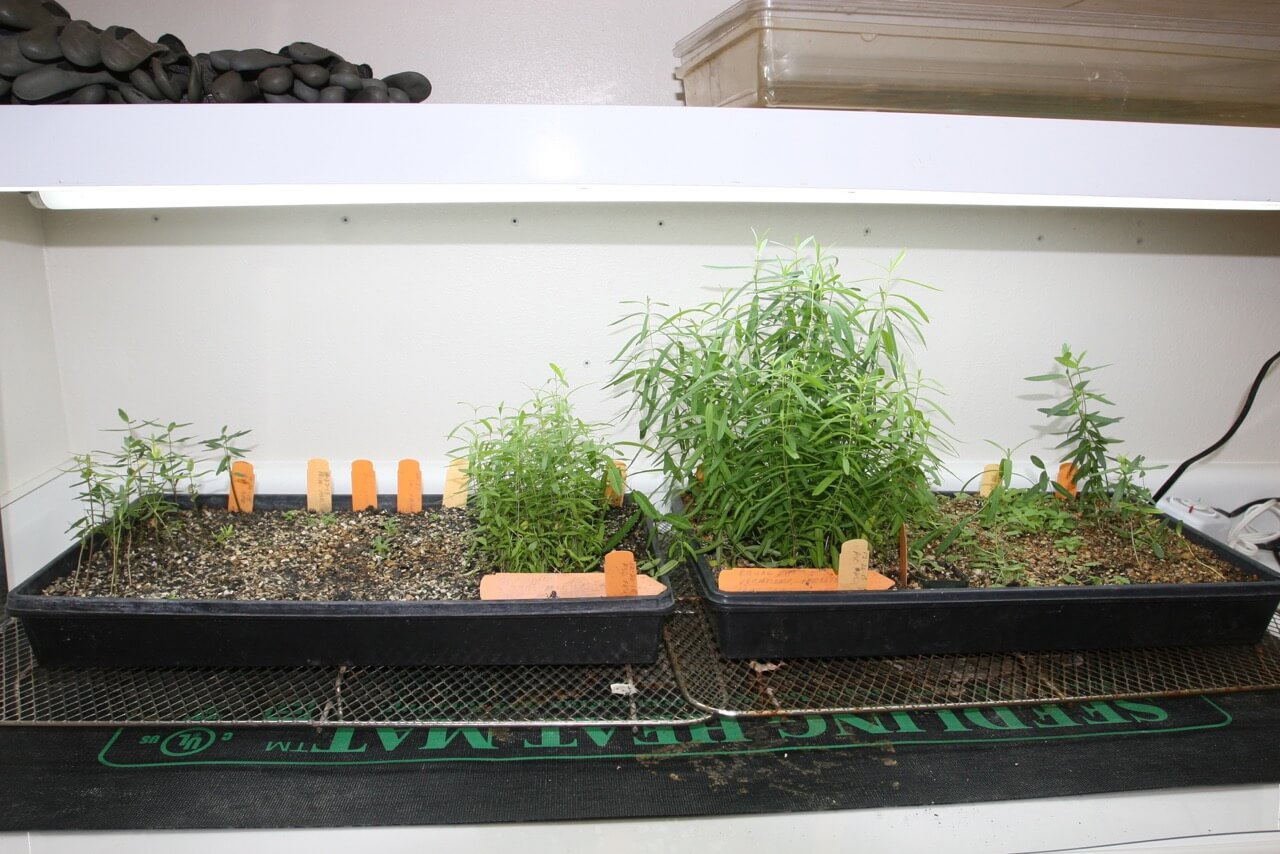Milkweed for the Monarch Butterflies
Asclepias fascicularis
Milkweeds provide important resources for many beneficial creatures, including Monarch butterflies. The fine leaves of this native milkweed gives it’s a soft, wispy look. The plant isn’t long-lived, but reseeds itself readily. Summer blooms, 3’ tall, low water, full sun, dormant in winter.
Asclepias speciosa
Monarch butterflies depend on milkweed to provide food for their caterpillars once they hatch. Star-shaped flowers in large clusters are produced from late spring to summer. Slow to get started but can get 3-5 ft. tall once established, low water, cut to the ground in winter.
Milkweeds are literally the life blood of the Monarch Butterfly. Both species, Narrow-leaf Milkweed (Asclepias fascicularis), and Showy Milkweed (Asclepias speciosa) are relatively easy to start from seeds. The trick is to pre-soak the seed in warm water for about 3 or 4 hours before sowing them. The seeds are a good size, but flat, so the best technique is to gently scratch them into the soil mix just a little, then cover them with vermiculite and tamp that down for solid seed-to-soil contact.
These species germinate more readily in a controlled indoor situation. I use a gro-light set for 12 hours a day initially, and a bottom heat mat which keeps the soil temperature at about 70 degrees. Germination starts to occur within 4 or 5 days, increasing over the next several weeks to a month or more. I often start the process in late December, which allows enough time to grow large plants with vigorous root systems, ready for fall planting. The Narrow-leaf Milkweed is faster and easier than the Showy, and is also the better plant both for the Monarchs and for a garden situation.
Within a month or so the true leaves have developed, and when the seedlings are about 3 inches tall with a nice sturdy stem and several sets of leaves, they can be transplanted. Depending on available space we transplant to 4” square pots, or use long thin pots – sometimes called “liners” – for the first transplant. We use taller, narrow pots for the more mature seedlings, too. This style of container allows a really good root system to develop.
For seedlings started indoor under controlled conditions, the hardening-off process is important. Expose the seedlings gradually at first to morning sun only, keeping them inside at night, but without bottom heat. Then add more hours in the sun, and otherwise in a protected area (such as an outdoor covered porch). Finally, you can put them outdoors in full sun, and they can be exposed to cooler nighttime temperatures.
One thing I’ve learned through hard experience is that rats will eat Milkweed seedlings down to a nub, and that seedling rarely recovers. Snails and slugs will also eat Milkweed seedlings! It seems really strange that these creatures are able to handle the potent chemicals contained within the plant – but they obviously can – so be sure to protect your new seedlings. I make box-type cages that cover a whole standard nursery flat from ¼” galvanized wire mesh, and I also cover the bottom of the flat with the wire to keep the rodents out.
Another creature to be aware of when growing Milkweeds is the orange aphid, (Aphis nerii) which is a non-native species introduced with Oleandars (Nerium oleander). Aphids reproduce by a system called parthenogenesis, which is basically self-reproduction by females giving live birth to other pregnant females. This is why the colonies build up so fast, and because the aphid is feeding on a toxic plant, they are also somewhat toxic, and the usual native predators cannot control really large populations.
I monitor the Milkweed seedlings closely and at the first sign of aphids, I either crush them or wash them off the plant with a strong stream of water. Next in the arsenal is a soap spray, and after that a Neem-oil spray to control the populations of this tiny beast. It is important, because large populations of aphids can completely enervate a plant, destroying the good leafy growth early in the season. Once this happens the plant is not in very good shape to host Monarch larvae, which, here in Marin, usually don’t show up until later in summer, long after the aphids have colonized the plants.
The very best Milkweed of all for the larvae of the Monarch butterfly is a non-native “Tropical” or “Mexican” Milkweed (Asclepias curassavica). This particular species of Milkweed (there are 14 species native to California alone, and dozens more native to the Americas, as well as other temperate climates around the world) has the highest level of Cardiac Glycosides of the species that are easily cultivated.

